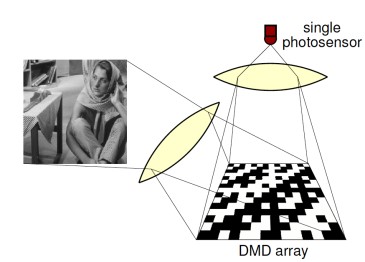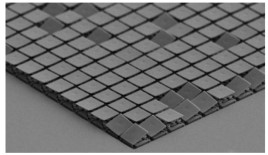Lead Organisation: University of Strathclyde
Project Lead: Daniel Oi
Partners: Wideblue Ltd.
Multispectral imaging (MSI) from space has important applications for Earth Observation but conventional MSI instruments are necessarily more complex, bulky and costly than single band or RGB-VIS imagers, restricting their deployment to larger satellites. A novel imaging paradigm, Single-Pixel (SP) imaging, offers the possibility of performing shared aperture MSI with a more compact payload together with greater operational flexibility and vastly reduced data handling requirements compared with conventional instruments.
The key goals of the project are to demonstrate the application of SP techniques to MSI instruments suitable for nanosatellite deployment and provide high capability at lower cost. The team will continue translation of terrestrial SP technology (begun under UKSA NSTP-3 funding) to design and build a prototype and characterise its performance. This form of scanning-type single-pixel imaging is suited to multi-spectral operation in bands where conventional MSI is difficult or expensive for nanosatellite platforms. The team will continue engaging end users and upstream providers to inform and update developmental pathways, and perform downstream application scanning and development. The initial aim is to build and operate a prototype that would be the basis for a space-qualified instrument for in-orbit-demonstration on a nanosatellite.
The outputs from the work will progress the roadmap for rapid realisation of cost-effective MSI from nanosatellites and provide a concrete realisation of new enabling technologies. The primary objectives for this work are:
- To provide experimental proof-of-principle of Single-Pixel multi-spectral imaging with characteristics suitable for nanosatellite deployment.
- To analyse signal processing techniques that further enhance the method.
- To design, build, and test a prototype MSI instrument.
- Develop downstream applications and engage users as well as upstream providers. The properties of SP imaging, specifically that an image can be formed from a very small amount of intensity data, provide the key advantage that will allow significant multispectral imaging on nanosatellites.
Moreover, application of an optical processor allows for reprogrammable case-specific information filtering, changes the imaging paradigm and paves the way for a different category of imaging data consumers who can actively decide the specifications of the imaging device on the fly. By applying algorithms from image analysis and machine learning, the imaging device can also play the role of a fast alerting system that is able to quickly inform users about events of given characteristics.


